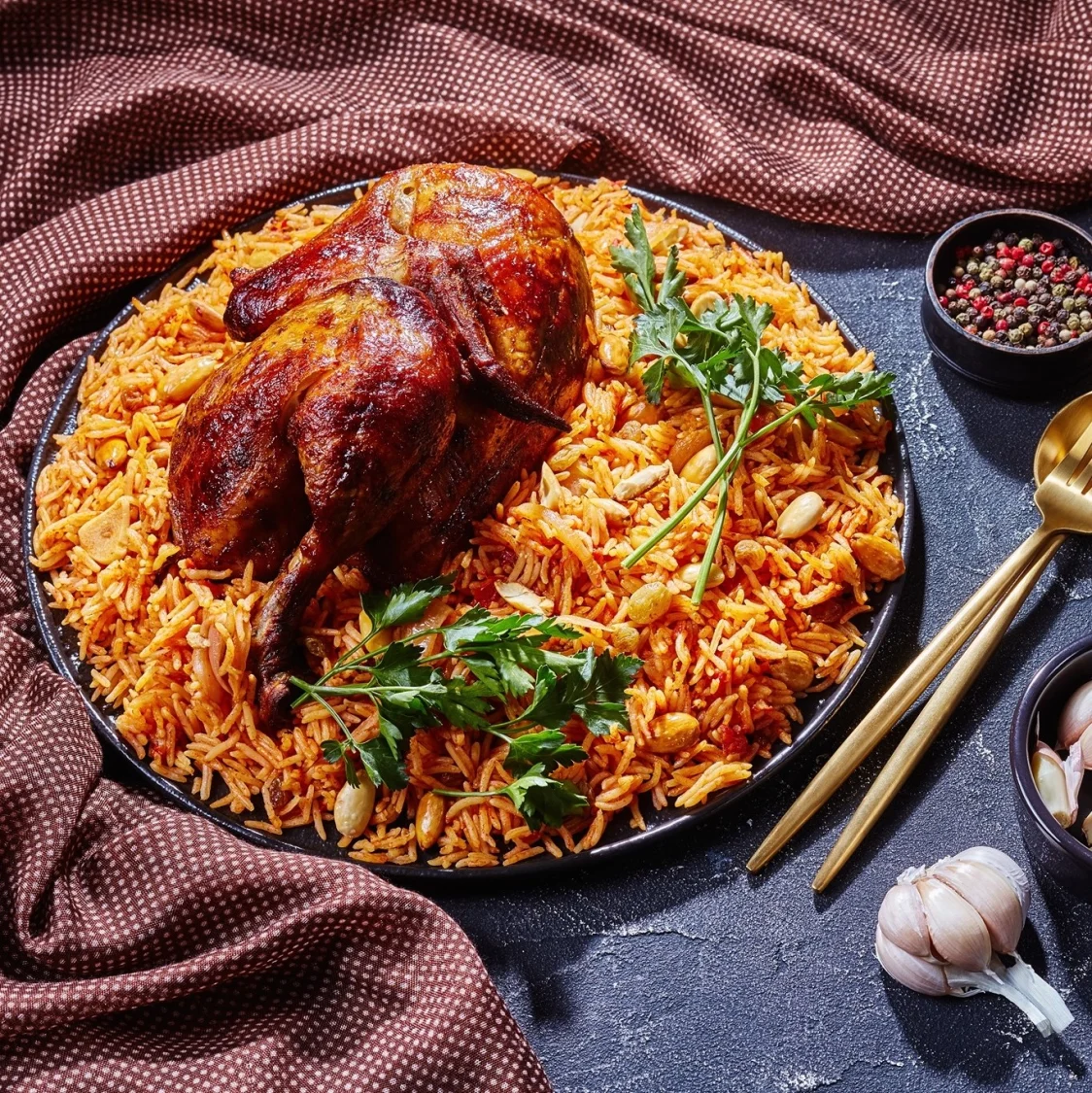
Al-Mandi
A fragrant rice dish with meat, cooked with a blend of spices, traditionally prepared in a tandoor.
Ingredients
- •Lamb or chicken
- •Basmati rice
- •Onions
- •Garlic
- •Tomatoes
- •Spices (cumin, coriander, turmeric, cardamom, cloves, cinnamon)
- •Salt
- •Pepper
- •Nuts
- •Raisins
Instructions
Marinate Meat
Marinate the meat with spices for at least 1 hour.
Cook Meat
Cook the meat in a tandoor or oven until tender.
Prepare Rice
Cook the rice with onions, garlic, and spices until fluffy.
Combine and Serve
Serve the meat on top of the rice, garnished with nuts and raisins.
Al-Mandi is a traditional Middle Eastern dish that originated in Yemen but has become a beloved staple in Saudi Arabian cuisine. This aromatic rice and meat dish gets its unique flavor from being traditionally cooked in a special underground clay oven called a tandoor, though modern preparations often use conventional ovens.
The history of Al-Mandi dates back centuries, with its name derived from the Arabic word "nada" meaning "dew," referring to the moist and tender texture of the meat. The dish was traditionally prepared by Bedouin tribes and has since evolved into a prestigious dish often served at special occasions and celebrations.
To prepare Al-Mandi, meat (usually lamb or chicken) is first marinated with a blend of aromatic spices including cumin, coriander, turmeric, cardamom, cloves, and cinnamon. The meat is then slow-cooked until incredibly tender, while the rice is prepared separately with onions, garlic, and the same aromatic spices. The cooking process allows the meat's juices to drip onto the rice, infusing it with rich flavors.
While the traditional preparation method involves a tandoor, home cooks can achieve similar results using a regular oven. Some variations include adding vegetables to the rice, or incorporating different spice combinations to suit personal tastes. The dish can also be made with different types of meat, though lamb and chicken remain the most popular choices.
In Saudi Arabia, Al-Mandi is typically served on a large communal platter, with the fragrant rice forming a bed for the tender meat placed on top. It's often garnished with toasted nuts and raisins, which add texture and a subtle sweetness to the dish. The meal is traditionally eaten with the right hand, though modern settings usually include cutlery.
While Al-Mandi is undeniably delicious, it's worth noting that it can be quite rich in calories due to the meat and the traditional cooking method. Those watching their caloric intake might want to opt for leaner cuts of meat and reduce the amount of oil used. The nuts used in garnishing should be noted by those with nut allergies, though they can easily be omitted. The dish is naturally gluten-free when prepared traditionally, making it suitable for those with gluten sensitivities.
